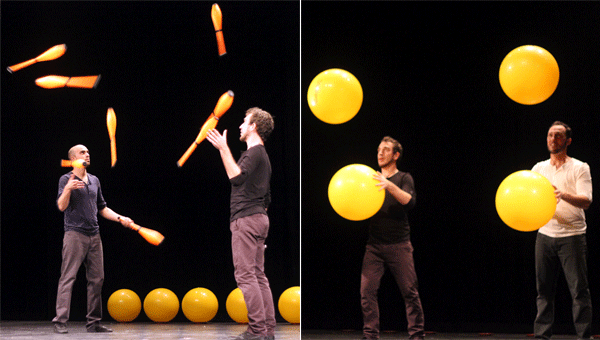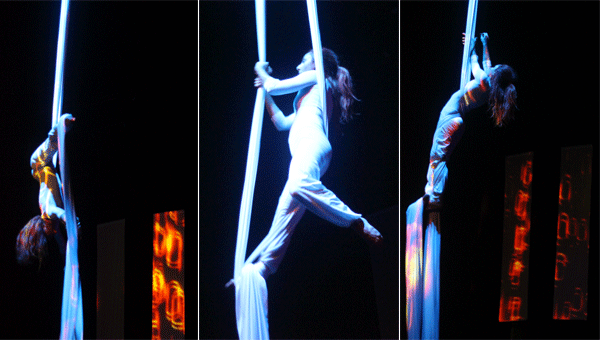Circus is one of the oldest art forms known to mankind and the first representations of circus tricks date from the Ancient China, Egypt and Greece. Curiously, Egypt has one of the oldest depictions of circus-like tricks, such as acrobatic entertainers known from tombs in Luxor and women toss jugglers decorating a cemetery site in Beni Hassan (close to Minya, approx 250 km south of Cairo), filled with tombs that date back to 17th-20th centuries BCE.
Throughout the course of history circus played the role of entertainment for laymen during popular festivals and equally amused royalties inside their palaces. Juggling, tightrope walking, taming and performing with dangerous animals, jumping over a bull popular in Ancient Greece or fire eating inspired by the 19th century Hindu performances, the circus incites laughter, amusement and awe.
The 20th century brought many transformations in the world of arts and in the second half of the century circus began reaching beyond its light entertainment and commercial function. Borrowing its aesthetical form from no other artistic sibling than theatre itself, international circus arts made a significant shift in its positioning in the social landscape.
Over the past few decades, the contemporary circus, known as le nouveau cirque, gave birth to the internationally renowned troupes such as Royal Lichtenstein Circus, Cirque du Soleil, Le Cirque Imaginaire founded by Chaplin's daughter Victoria, among others. While providing a theatrical frame and introducing the linear development of the theme or building the imagery, the acrobats become actors blending the gap between theatre and circus.
The nouveau cirque is not practiced by Egyptian artists, and it is not known to the vast majority of local audiences. This is how the biennial Cairo International Circus Festival (CirCairo) is the only opportunity to explore circus in all of its forms, traditional and contemporary.

Gandini Juggling from the UK perform at falaki Theatre on 18 October 2014 (Photo: Ati Metwaly)
Running between 17 and 26 October, in its third edition this year, Cairo International Circus Festival (CirCairo), a brainchild of Culture Resource (Al Mawred Al Thakafy) hosts troupes from a number of European countries, topping them with home born Al-Darb Al-Ahmar Arts School. With all events free of charge and accessible to all social strata, the audiences are taken across a captivating journey of forms and contents, from street jugglers in open air locations to inspirational visual experiences, where the acrobatics meet the imaginary in theatre halls.
While the first day opened with large scale performances combining all the troupes in Al Azhar Park, the second day, 18 October, moved the spectators to the stages of Falaki theatre where Gandini Juggling from the UK and Lumen from Switzerland presented shows that combined acrobatics, gymnastics, ballet, and theatre, topping the performances with a large dosage of imaginary elements.
Gandini Juggling came with five performers, four men and one woman, who dressed casually, performed successive numbers that included small and large yellow balls, clubs or hats. While constantly toying with gravity, the performers projected an exceptional ease when forming at times very complex juggling patterns. Appealing to the eyes, Gandini's work was set at the backdrop of a number of music genres, from pop and techno to classical music.

Lumen from Switzerland performs at Falaki Theatre on 18 October 2014 (Photo: Ati Metwaly)
In their last numbers, the performers incorporated some light technologies to the show, a procedure which was nevertheless explored to the full in the second show by Lumen.
As the troupe's name indicates, the Swiss performers rely on light, its colours, reflections and intensity. The objects and lights became the essential tools, as the troupe created captivating images where imaginary joined the artistic definitions.
While moving across classical elements – earth, air, water and fire – the acrobatics and juggling, the suspended fabric for aerial tricks and a large hoop, all served as embroidery to the stage infused in visuals. With light providing basic scenery, the spectator was moved from space to the sea while the props changed their function depending on the setting. For example, the umbrella-like objects held by the actors and sheltering them from wind in one scene, gave the impression of large jellyfish filling the stage in another scene. In this sense, Lumen's performance carries a highly theatrical context, where not only props but also the whole scenography leaves a lot of room to the audiences' creative interpretations.
As the CirCairo continues, its programme includes several performances which will definitely fascinate circus lovers and attract the attention of theatre followers. As such the festival is an important feast for all artistic tastes, all generations and the aesthetic preferences of each spectator. With the classical circus performances, the audience is left with admiration of acrobatic skills. In its turn, the contemporary circus troupes provide a different layer of depth, and without taking away the element of entertainment, they manage to touch on our most refined senses.
Check the CirCairo programme here and the photo gallery from the opening night at Al Azhar Park here.

Lumen from Switzerland performs at Falaki Theatre on 18 October 2014 (Photo: Ati Metwaly)
Short link: